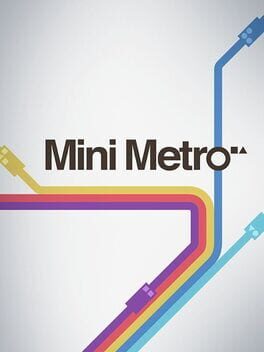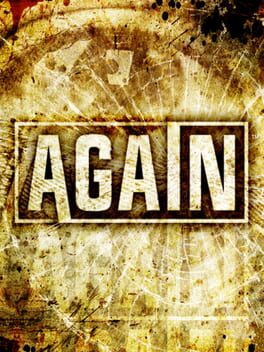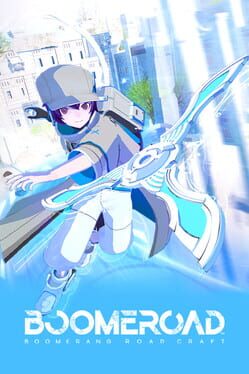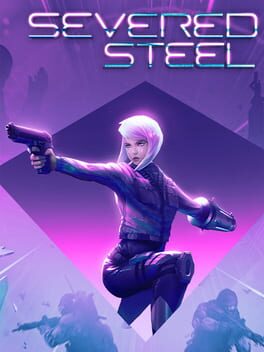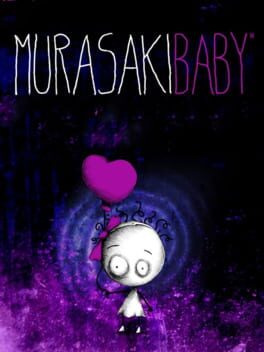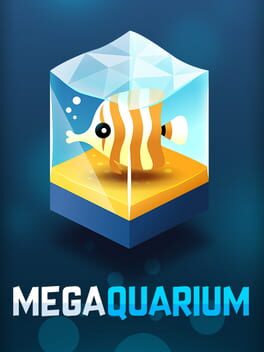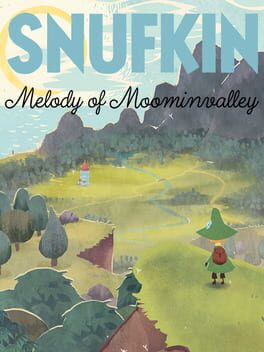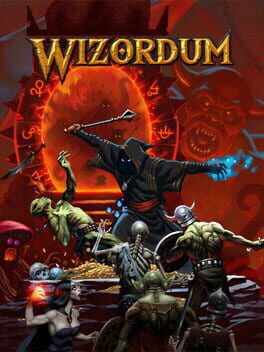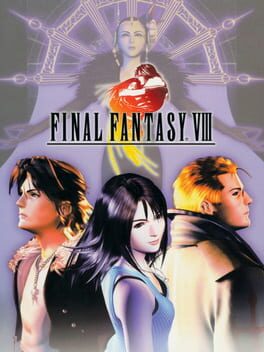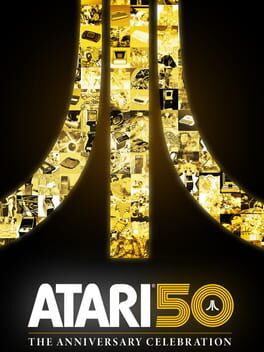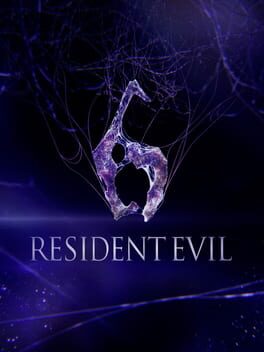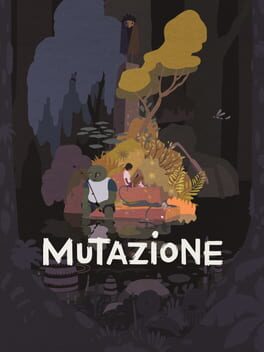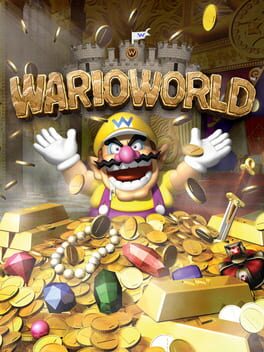2413 Reviews liked by Ardwyw_mp3
Mini Metro
2015
As a kid, I was absolutely obsessed with subways. Whenever my family and I traveled to a new city, my immediate fixation was not the city’s many attractions but rather the intricate infrastructure linking all these various locales. While my family handled the destinations, I handled everything in-between. I wanted to know the most efficient way to get from point A to B, if there were any loopholes or special conditions necessitating an off-the-beaten-path itinerary, and most of all, I kept tabs on any planned changes regarding the evolving transportation so I could make notes of where to adjust and prioritize for future trips. I never realized it back then, but there was a certain satisfaction to memorizing every station and optimal route and running the simulations in my head that eventually led me down the path of engineering.
Mini Metro is essentially my childhood fascination with subways conceptualized as a video game. It’s super easy to pick up thanks to its minimalist design and intuitive controls; passengers are depicted with geometric symbols headed to corresponding symbolic destinations, distinctly colored subway lines are constructed by dragging your mouse between stops, and you can easily manipulate existing lines without disrupting progress by simply clicking and dragging sections of a line to new stops. At the same time, it can quickly become challenging, but this skill ceiling feels fairly approachable because the game is less about memorizing specific formulas and more about understanding implicit guidelines. For example, having a line that hits every stop in the area sounds appealing, but what’s less appealing is how much more time is subsequently spent traveling and loading/unloading passengers; you can at least somewhat account for this by toggling specific stations as “no-stop” to create express lines. The AI is fairly predictable and will always calculate the shortest path to the corresponding destination, but this also means that there’s real potential for them to overload the capacity of certain stations while in-transit between different lines. Alongside this, the game is great at organically iterating upon its basic formula to escalate difficulty by introducing more stops, altering the shape of stops to create more unique passengers and necessitate different routes, and increase the system’s load with more passengers while forcing the player to juggle their already limited number of lines, cars/carriages, and tunnels/bridges as also dictated with newly unlocked maps. At its core, it’s a game that’s great at subtly teaching players how to recognize bottlenecks and micromanage individual elements to fully understand how minor changes can quickly ripple across the fully intertwined system.
My only real nitpicks are that picking apart subway loops can get a bit annoying since you can only fiddle with one exposed end at a time while in loop form; it’s a minor complaint considering that you can pause the game at any time to more carefully reconstruct lines, but adding extra steps to reconstruct common subway loops is fairly noticeable considering Mini Metro’s elegant interface. Also, I do wish that there was a way to construct slightly longer paths along rivers instead of automatically building across them between certain junctions and using up my already limited supply of tunnels and bridges. Nevertheless, I acknowledge that this last gripe is mostly personal, and I think this game absolutely delivers upon its premise with precise execution. With so many different maps and daily challenges to boot, there’s plenty of content to exhaust within the game, and if one finds the basic experience too stressful or is more interested in sheer experimentation, then they can simply turn to endless and creative modes instead. For an accessible yet deceptively deep management game that gives great bang for your buck, I’d say Mini Metro is a fantastic entry point into the world of optimization simulators that more than holds its own against its more daunting peers.
Mini Metro is essentially my childhood fascination with subways conceptualized as a video game. It’s super easy to pick up thanks to its minimalist design and intuitive controls; passengers are depicted with geometric symbols headed to corresponding symbolic destinations, distinctly colored subway lines are constructed by dragging your mouse between stops, and you can easily manipulate existing lines without disrupting progress by simply clicking and dragging sections of a line to new stops. At the same time, it can quickly become challenging, but this skill ceiling feels fairly approachable because the game is less about memorizing specific formulas and more about understanding implicit guidelines. For example, having a line that hits every stop in the area sounds appealing, but what’s less appealing is how much more time is subsequently spent traveling and loading/unloading passengers; you can at least somewhat account for this by toggling specific stations as “no-stop” to create express lines. The AI is fairly predictable and will always calculate the shortest path to the corresponding destination, but this also means that there’s real potential for them to overload the capacity of certain stations while in-transit between different lines. Alongside this, the game is great at organically iterating upon its basic formula to escalate difficulty by introducing more stops, altering the shape of stops to create more unique passengers and necessitate different routes, and increase the system’s load with more passengers while forcing the player to juggle their already limited number of lines, cars/carriages, and tunnels/bridges as also dictated with newly unlocked maps. At its core, it’s a game that’s great at subtly teaching players how to recognize bottlenecks and micromanage individual elements to fully understand how minor changes can quickly ripple across the fully intertwined system.
My only real nitpicks are that picking apart subway loops can get a bit annoying since you can only fiddle with one exposed end at a time while in loop form; it’s a minor complaint considering that you can pause the game at any time to more carefully reconstruct lines, but adding extra steps to reconstruct common subway loops is fairly noticeable considering Mini Metro’s elegant interface. Also, I do wish that there was a way to construct slightly longer paths along rivers instead of automatically building across them between certain junctions and using up my already limited supply of tunnels and bridges. Nevertheless, I acknowledge that this last gripe is mostly personal, and I think this game absolutely delivers upon its premise with precise execution. With so many different maps and daily challenges to boot, there’s plenty of content to exhaust within the game, and if one finds the basic experience too stressful or is more interested in sheer experimentation, then they can simply turn to endless and creative modes instead. For an accessible yet deceptively deep management game that gives great bang for your buck, I’d say Mini Metro is a fantastic entry point into the world of optimization simulators that more than holds its own against its more daunting peers.
Again
2009
As much as I liked playing through parts of Again, I unfortunately find it quite difficult to recommend within Cing's repertoire. The hook is that you're an FBI agent investigating the Providence serial killings from 19 years ago, and you have special powers that allow you to simultaneously view the past and present on separate screens of the DS. In order to do so, you have to manipulate your current surroundings of the present to match the previously undisturbed past through a series of inventory and touchscreen puzzles to view past events as they played out, thus imitating the real life crime fighting techniques of reconstructing and reenacting crime scenes. It's a little rough around the edges, given that not every difference between the present and past will result in an interactable area of interest, and the game is not great at signaling when the player must exit the crime scene for more clues/evidence versus simply not having investigated enough of their surroundings. Nevertheless, I found this core premise engaging enough to see the entire game through.
Sadly, all the surrounding elements greatly dilute the overall experience despite the fantastic conceptual hook. Again suffers from the classic detective adventure game issue I refer to as the "every" problem. You have to talk to everyone everywhere about everything, every time. This gets grating immediately, and is exacerbated by the sheer amount of menuing, screen transitions, and mandatory flavor text that you have to tap through. In addition, the game often requires players to exhaust every option to proceed in order to pass time while NPCs investigate leads and evidence on their own. The game's overarching premise also backfires here. Because you're specifically investigating past murders, most of your time is spent interviewing former co-workers and family of the former victims. As a result, many of the game's characters exist simply as vessels to convey information of what the deceased characters were like back then, and generally lack any significant identity of their own. Couple that with all the constant traveling since you must ask each witness a new single question every time with each new discovery, and it's far too easy to feel disconnected from the game's plot and setting as a whole.
In a sense, Again may as well be the antithesis of Hotel Dusk. Hotel Dusk was a succinct mystery where much was revealed over just half a day, filled with complex characters all coming together within a connected environment all contributing to the final revelation in their own way. Again on the other hand, plays out over the course of more than two weeks with fairly little happening per day, and is filled with many underdeveloped characters and separated locations that usually have little agency upon the game's events, long forgotten about once the game starts to escalate towards its denouement. I'll give Cing their due for delivering upon the core gameplay premise (aside from the absence of any microphone and DS open/close puzzles) and nailing the true perpetrator revelation and confrontation, but I must admit that Again lacks the cohesion of much of Cing's library and fails to fully realize its potential. Even the conclusion feels like a letdown given Again's cliffhanger ending, though I'll cut them some slack here given that Cing would unfortunately file for bankruptcy in less than a year after the game's release and was clearly setting up for another installment. All I'm saying is that if Arc System Works is looking for another overlooked Cing game to remake... Again might be right up their alley.
Sadly, all the surrounding elements greatly dilute the overall experience despite the fantastic conceptual hook. Again suffers from the classic detective adventure game issue I refer to as the "every" problem. You have to talk to everyone everywhere about everything, every time. This gets grating immediately, and is exacerbated by the sheer amount of menuing, screen transitions, and mandatory flavor text that you have to tap through. In addition, the game often requires players to exhaust every option to proceed in order to pass time while NPCs investigate leads and evidence on their own. The game's overarching premise also backfires here. Because you're specifically investigating past murders, most of your time is spent interviewing former co-workers and family of the former victims. As a result, many of the game's characters exist simply as vessels to convey information of what the deceased characters were like back then, and generally lack any significant identity of their own. Couple that with all the constant traveling since you must ask each witness a new single question every time with each new discovery, and it's far too easy to feel disconnected from the game's plot and setting as a whole.
In a sense, Again may as well be the antithesis of Hotel Dusk. Hotel Dusk was a succinct mystery where much was revealed over just half a day, filled with complex characters all coming together within a connected environment all contributing to the final revelation in their own way. Again on the other hand, plays out over the course of more than two weeks with fairly little happening per day, and is filled with many underdeveloped characters and separated locations that usually have little agency upon the game's events, long forgotten about once the game starts to escalate towards its denouement. I'll give Cing their due for delivering upon the core gameplay premise (aside from the absence of any microphone and DS open/close puzzles) and nailing the true perpetrator revelation and confrontation, but I must admit that Again lacks the cohesion of much of Cing's library and fails to fully realize its potential. Even the conclusion feels like a letdown given Again's cliffhanger ending, though I'll cut them some slack here given that Cing would unfortunately file for bankruptcy in less than a year after the game's release and was clearly setting up for another installment. All I'm saying is that if Arc System Works is looking for another overlooked Cing game to remake... Again might be right up their alley.
Boomeroad
2024
Bandai-Namco released Boomeroad worldwide two days ago as part of a suite of simple and experimental games to train new recruits from their indie developer Gyaar Studio. The concept here combines a standard 3D platformer with boomerang throwing that creates grindable rails that can be chained for extended mid-air traversal. You refresh your energy gauge by passing through rings and landing on platforms, and you can increase the gauge's capacity by collecting optional artifacts. Unfortunately, the gameplay is undercooked. You can't adjust the shape of the boomerang's arc besides flattening the upward curve a little, there's very few interactable objects (switches and fans) that force the player to throw the boomerang at them for activation, and you can in fact avoid most of these elements entirely by throwing two chained boomerang arcs to climb up and walk on top of the level's walls, skipping entire sections of the level while never running out of gauge. While I thought speedrun mode would mitigate most of these shortcomings, I don't find the movement satisfying enough because there's fairly little momentum conserved upon jumping off of rails for speeding up, so the movement itself lacks weightiness and route planning isn't very interesting when you're incentivized to just follow the set path of rings for time bonuses. I suppose there's only so much I can complain about a free game nevertheless, and although I don't see Gyaar Studio returning to this, I do think they've got a solid concept on their hands that could prove to be an interesting 3D puzzle-platformer if thoroughly fleshed out with more committal movement and tighter level design.
Severed Steel
2021
There's not a ton of complexity as to how Severed Steel operates and some elements need fine-tuning, but I can't help but appreciate how much the game accomplishes with surprisingly little. I'm a fan of the simple and effective UI; your aiming reticle is surrounded by two bars that convey how much ammo and slo-mo time is left (so these gauges are always near the center of attention) and the flashing light on your gun also changes color (from light neon colors to yellow to red) so you're constantly keyed in on when you'll need to pick up a gun early or engage/disengage when running low on supplies. Enemies stand out from the environment thanks to the cel-shaded enemy outlines, and upon death emit a distinct explosion sound-effect so there's no ambiguity when quickly rifling through targets during firefights or when picking off enemies from afar. Guns feel great to aim and fire in slow-mo, mainly because there's very noticeable recoil when firing in real-time; the contrast really helps sell the necessity of the feature. I also love Severed Steel's kick as both a form of attack and traversal; the obvious purpose is your primary melee attack while holding a gun if you don't want to expend your limited magazine to finish off an enemy as well as kicking open doors, but it can also be used to quickly ascend up walls or kick off of grounded/aerial enemies if your double jump isn't enough. The same goes for the arm cannon; you can fire holes into any surface if you don't feel like hunting down stairs/doorways for objectives, but it also provides a nice desperation option to instantly eliminate shielded enemies or drop heavy grunts down to another floor if you find yourself without a weapon.
Despite the appealing core gameplay, Severed Steel can often feel a bit repetitive. Enemy variety feels lacking since the player is usually approaching enemies in a similar manner (that is, entering slo-mo while using stunts to efficiently dispatch foes while firing into their heads/backsides), and I would have liked to see enemies that had to be specifically eliminated using the arm cannon or melee as mix-ups. The Rogue Steel mode does touch upon this with random enemy buffs that force such approaches, but at times I feel like this mode prefers to lengthen combat by overwhelming the player with excess enemies with more health. I do think the game could have also leaned a bit more into its parkour elements with additional stages that focused upon traversal and dodging/quickly disposing of enemies, as there were only a couple of timed story missions that necessitated a rush to the end. Finally, I have to agree with HotPocketHPE that the slo-mo gauge is unbalanced; you'll practically never run out of bullet time as long as you're staying in stunt mode (super easy since there are floors and walls aplenty to slide and wallrun), though this is again addressed from playing Rogue Steel via the "Rebalanced Bullet-Time" unlockable modifier. Even with these gripes however, Severed Steel is a pretty easy recommendation considering how content-rich the game is from its many different modes and extra campaign/workshop levels to tinker with. It was an absolute steal at 80% off on the Steam Spring Sale, and I can't wait to see how Greylock Studio iterates and improves upon their already fantastic formula.
Despite the appealing core gameplay, Severed Steel can often feel a bit repetitive. Enemy variety feels lacking since the player is usually approaching enemies in a similar manner (that is, entering slo-mo while using stunts to efficiently dispatch foes while firing into their heads/backsides), and I would have liked to see enemies that had to be specifically eliminated using the arm cannon or melee as mix-ups. The Rogue Steel mode does touch upon this with random enemy buffs that force such approaches, but at times I feel like this mode prefers to lengthen combat by overwhelming the player with excess enemies with more health. I do think the game could have also leaned a bit more into its parkour elements with additional stages that focused upon traversal and dodging/quickly disposing of enemies, as there were only a couple of timed story missions that necessitated a rush to the end. Finally, I have to agree with HotPocketHPE that the slo-mo gauge is unbalanced; you'll practically never run out of bullet time as long as you're staying in stunt mode (super easy since there are floors and walls aplenty to slide and wallrun), though this is again addressed from playing Rogue Steel via the "Rebalanced Bullet-Time" unlockable modifier. Even with these gripes however, Severed Steel is a pretty easy recommendation considering how content-rich the game is from its many different modes and extra campaign/workshop levels to tinker with. It was an absolute steal at 80% off on the Steam Spring Sale, and I can't wait to see how Greylock Studio iterates and improves upon their already fantastic formula.
Murasaki Baby
2014
Developers have long since exhausted the trope of "child trapped in a scary world," yet despite that, Murasaki Baby remains compelling in a way that none of its competition ever was. Simply put, it quite literally puts the child's fate at the player's fingertips. Your goal is to ferry a young girl across screens of hazards by manipulating hazards using both the Vita's front touchscreen and the back touchscreen to cycle through various backgrounds unlocked by popping colored balloons. I find the Ico comparisons to be on-point, as the player must physically guide the girl by the hand via holding and dragging on the touch-screen, taking care not to stretch her arm too far lest she stumble and fall. While the game isn't mechanically complex or challenging, it nevertheless constantly engages the player by gradually introducing more elements that require the player to micromanage dragging the girl and the balloon out of harm's way and switching/tapping the background to progress. The best example of this occurs during the final stretch of the game; after another character pops a hole in the girl's balloon, the player must juggle dragging the girl around, tapping the green background to repeatedly pump air into the leaking balloon, and switching/tapping additional colored backgrounds to flip the stage with the Vita's gyro controls and powering moving platforms with electricity. Though the path forward remains clear, the game demands a strong degree of attention and precision to quickly recognize and solve the game's many puzzles while building the bond between the girl and the player.
Murasaki Baby has unfortunately been more or less forgotten by the public. A slew of technical issues does hold the game back somewhat, as others have reported that saving sometimes breaks down in the middle of playthroughs and a few more (myself included) have experienced crashes. If I really had to nitpick, the game also could have done a bit more integrating all of the Vita's control functionalities into the gameplay (unlike say, Tearaway), as the face buttons/triggers/cameras are never used and the joysticks are used for exactly one exclusive segment outside of the menu screen. While I do feel as if the game was fairly short (about an hour and a half) and wrapped up just when I was beginning to feel a bit more pressured, I'm still glad that I got to try another overlooked title that showed real promise of how far a game could utilize controls to create an emotional and completely new experience. Until the day Astro's Playroom gets a follow-up, I suppose we'll just have to dream of a world where Sony invested wholeheartedly into its hardware and the Vita was seen as more than just a glorified control gimmick.
Murasaki Baby has unfortunately been more or less forgotten by the public. A slew of technical issues does hold the game back somewhat, as others have reported that saving sometimes breaks down in the middle of playthroughs and a few more (myself included) have experienced crashes. If I really had to nitpick, the game also could have done a bit more integrating all of the Vita's control functionalities into the gameplay (unlike say, Tearaway), as the face buttons/triggers/cameras are never used and the joysticks are used for exactly one exclusive segment outside of the menu screen. While I do feel as if the game was fairly short (about an hour and a half) and wrapped up just when I was beginning to feel a bit more pressured, I'm still glad that I got to try another overlooked title that showed real promise of how far a game could utilize controls to create an emotional and completely new experience. Until the day Astro's Playroom gets a follow-up, I suppose we'll just have to dream of a world where Sony invested wholeheartedly into its hardware and the Vita was seen as more than just a glorified control gimmick.
A game clearly made by a bunch of artists and writers who utterly lack the game design skill to actually pull off what they wanted to do. As a lover of adventure games I’m not a stranger to encountering adventure games like this, ones that add mechanics that just drag the experience down because the devs just did not have a good grasp of them at all or were too afraid that their work is not “gamey” enough so they felt the need to shoehorn them in. Little Goody Two Shoes is a life-sim/yuri VN frankensteined together poorly with an RPGmaker horror game and those elements are at complete odds with each other. The aesthetics and atmosphere are phenomenal, merging 90’s shoujo and Grimms’ fairy tales wonderfully. The writing is solid enough too as the main cast of ladies are likable and the mystery is engaging enough. The life sim elements are mostly fine, most of the job mini-games are alright though I’m not a fan of the rat one. The game does a bit of a bad job of pushing the player to overly fear raising suspicion though as it’s usually not hard to avoid or at least drop it down; I can easily see someone screwing themselves if they invested too much stamina and money in bringing Rozenmarine to work with them at all because it’s just not worth it, the villagers can be easily assuaged with the right responses. The night time horror segments is where the game completely goes to shit though.
This game really shows how it’s essentially a bad 2000’s RPGmaker horror game just with an actual budget as the nighttime segments are jank as hell with puzzles mostly relying on trial and error. One night has you run away from a boss who will instantly kill you and the game can’t really handle the chase sequence that well; spike blocks will fall too fast to dodge within a fair window unless you know they’re coming and the second segment seems like sometimes you’ll just get randomly killed even when you’re running full speed. The puzzles gets worse as the game goes on as Thursday has you play floor is lava with phantoms that are attracted to sound, but the camera tends to be too zoomed in to see them effectively at times so you’re probably going to walk your ass into a few of them because the game gives you very little visual or audio cues that they’re coming. Apparently some of the segments were even more obtuse and bullshit before they patched them and that’s just galling to me. The breaking point for me was on Friday where you had to go in complete darkness because turning on your lantern gets you instantly killed by statues. It’s absolutely abysmal puzzle design to the point where I’m baffled the devs thought it was a good idea. It’s not clever or challenging like good adventure game puzzles should, it genuinely feels like a troll. Thankfully somebody on Steam told me the solution so I went back and beat it but man did it still suck. The endings are also unsatisfying because they seem kind of at odds with each other and don’t really give a true conclusion if you take them into account. Just a wet fart of an ending to top off a game that was unraveling as it went along.
This game just utterly frustrates me because this game could have been great but its dogshit design decisions prevent it from being such. The game isn’t completely unsalvageable, a couple patches and overhauling the Friday puzzle to not be so awful and it’d be at a decent enough quality. Gonna be blunt and say they really need to hire a person who actually knows good adventure game design if they want to make keeping games like this. This is definitely the kind of game that you should probably watch an LP of. I’m usually the kind of guy who will readily defend games that have merely serviceable gameplay but great everything else, but Little Goody Two Shoe’s gameplay is too annoying for me to heartily endorse experiencing yourself.
This game really shows how it’s essentially a bad 2000’s RPGmaker horror game just with an actual budget as the nighttime segments are jank as hell with puzzles mostly relying on trial and error. One night has you run away from a boss who will instantly kill you and the game can’t really handle the chase sequence that well; spike blocks will fall too fast to dodge within a fair window unless you know they’re coming and the second segment seems like sometimes you’ll just get randomly killed even when you’re running full speed. The puzzles gets worse as the game goes on as Thursday has you play floor is lava with phantoms that are attracted to sound, but the camera tends to be too zoomed in to see them effectively at times so you’re probably going to walk your ass into a few of them because the game gives you very little visual or audio cues that they’re coming. Apparently some of the segments were even more obtuse and bullshit before they patched them and that’s just galling to me. The breaking point for me was on Friday where you had to go in complete darkness because turning on your lantern gets you instantly killed by statues. It’s absolutely abysmal puzzle design to the point where I’m baffled the devs thought it was a good idea. It’s not clever or challenging like good adventure game puzzles should, it genuinely feels like a troll. Thankfully somebody on Steam told me the solution so I went back and beat it but man did it still suck. The endings are also unsatisfying because they seem kind of at odds with each other and don’t really give a true conclusion if you take them into account. Just a wet fart of an ending to top off a game that was unraveling as it went along.
This game just utterly frustrates me because this game could have been great but its dogshit design decisions prevent it from being such. The game isn’t completely unsalvageable, a couple patches and overhauling the Friday puzzle to not be so awful and it’d be at a decent enough quality. Gonna be blunt and say they really need to hire a person who actually knows good adventure game design if they want to make keeping games like this. This is definitely the kind of game that you should probably watch an LP of. I’m usually the kind of guy who will readily defend games that have merely serviceable gameplay but great everything else, but Little Goody Two Shoe’s gameplay is too annoying for me to heartily endorse experiencing yourself.
Megaquarium
2018
The game that's come closest to bringing back all those childhood memories of playing Zoo Tycoon 1. A great mix of simplicity and complexity, as its easy to get the hang of it yet it demands you be able to meet the requirements of the fish as well as giving you side missions to complete so its always giving you enough to do. The devs have been supporting this game with quality expansions for years and I've spent nearly 200 hours with it over the years and have gotten every achievement. Just a fantastic tycoon game.
I’m an American so I didn’t grow up with The Moomins but I know enough about the series and I’ve been reading some of the comics so I decided to get this after playing the demo months ago.
Overall it’s a chill adventure game where you play as Snufkin as he wages battle against the cops and NIMBYs trying to gentrify Moominvalley. Puzzles are rather easy but it’s fun exploring and the stealth segments against the cops add nice variety. The art and music are wonderful, really capturing the whimsical fairy tale vibes the series has. The writing is fun with a good chunk of the game having Snufkin and Little My bouncing off each other. You can tell this is a love letter to the series so fans will definitely get a kick out of it but I think even you don’t know anything about Moomins you’ll still have a fun time, because it’s just a quality game all around.
Overall it’s a chill adventure game where you play as Snufkin as he wages battle against the cops and NIMBYs trying to gentrify Moominvalley. Puzzles are rather easy but it’s fun exploring and the stealth segments against the cops add nice variety. The art and music are wonderful, really capturing the whimsical fairy tale vibes the series has. The writing is fun with a good chunk of the game having Snufkin and Little My bouncing off each other. You can tell this is a love letter to the series so fans will definitely get a kick out of it but I think even you don’t know anything about Moomins you’ll still have a fun time, because it’s just a quality game all around.
Wizordum
2023
I liked the demo enough when I played it months back to get this now that Episode 1 is done in EA. Overall Wizordum is a solid enough fantasy boomer shooter currently, though its going to need some more sauce to rival fellow Heretic/Hexen inspired indie shooters such as AMID EVIL and Hedon. The weapons are good and I used mostly all of them but they're not really exciting so far, mainly just variations of standard boomer shooter arsenals, i.e. the ice wand is essentially a machine gun that freezes, the blunderbuss is essentially your shotgun. The level design is solid; levels are rather big but your next objective is always indicated on your map so you won't get lost and the secrets are mostly pretty fair if you're paying attention to breakable walls and you only need to hit your face against more conspicuous objects on the walls. It mostly starts off as essentially fantasy Wolfenstein in level design though it seems like the later levels in Episode 1 start shaking that up. There's a good variation in the levels so far too, ranging from a fantasy town, sewers and dungeons, a graveyard, docks, and moving around the wreckage of the part of town on fire. The soundtrack is actually nice too, embracing the heroic fantasy atmosphere in contrast to its dark fantasy shooter predecessors and contemporaries. Hoping this game keeps improving, but even if it just maintains this current level of quality I'd be cool with it.
Final Fantasy VIII
1999
I can barely form a coherent thought about what I just finished but I feel weirdly seen by Final Fantasy VIII and its protagonist in particular as this understanding of specific feelings of capitalist alienation that I've been unable to articulate for the longest time. I don't have any official diagnosis and especially do not want people I barely know armchair diagnosing me online but Squall's struggles to process the most basic social interactions in terms of anything other than capitalist obligations like school or work, "shut up and get the job done" mentality, and specific jaded outlook are core parts of myself I never expected to see reflected in this fashion. While I narrowly prefer the basic bitch choices of VI and VII in terms of Final Fantasy games, this surreal response to the cultural zeitgeist of the latter game and weird as fuck (complimentary) use of Marxist theory (specifically the "annihilation of space by time" described in Grundrisse and expanded upon over a century later by David Harvey) in the same way that most RPGs use religious/mythological concepts solely because it sounds cool is a game that will no doubt have a special place in my heart from now on.
A virtual museum into the genesis of video games
I'd like to preface this review by apologizing for the recent review spam as I go through most of the games in the collection.
I can safely say I was never into video games of a pure retro nature mostly. I lacked the patience and my brain has rotted to the point that I found it hard to really go back sometimes. I knew about Pong and Asteroids and my only real experience with Atari's legacy was a parody of it via watching Code Monkeys as a kid and just know seeing how much it really influenced that show. Most of my arcade experiences themselves derived from Namco mostly due to the fact that The PlayStation 1 titles worked as virtual museums as well as its own space which I also recommend you check out if you enjoy this type of collection. That said, this is a pretty great collection that goes in depth of what exactly Atari did for the video game space and as a company itself.
I really don't want to delve too much into the story of Atari due to the fact that the collection does a better job of it than I ever will but I will say that it manages to go into depth a bit with the people that were actually there at the time. Video interviews, statements, reading the flyers from then and even secret memos and corporate documents from then really give you the context of what went into making the games. Going into Adventure's influence, explaining how hard it was to make games for the 2600 due to the fact that they had to constrict themselves to a specific limit compared to creating arcade titles and even crazy stories like how much weed the developers smoked. There's a lot more here to unpack but I really do believe the collection does it justice better than a few sentences I could muster really do.
The games themselves are cool as every library is covered barring a few important ones sadly. The Jaguar collection itself seems to be lacking as well (for better or worse) but I feel like you got a lot of the important classics for the most part. Tempest ended up being a personal favorite of mine for the visual style and fast paced gameplay and this also its Jaguar counterpart, Tempest 2000. Classics like Pong, Asteroids, Star Raiders and Adventure are here with some wacky concept games like Ninja Golf really surprising me. Also a cool addition is that each game comes with its manual and appropriate media to get the most out of the games too making this much more than just a regular collection of emulated games.
Digital Eclipse did a great job with this collection. Being given a bit more insight into the inner workings of how the concept of household video games as a whole is something I didn't expect to come out of knowing. Really wish a lot of arcade or early game collections were like this where you have first hand accounts and documents explaining the intricacies of making a specific game or how something specific came to be. If you have a huge appreciation for the medium, this is definitely worth taking a look at and only hoping more things like these comes around.
I'd like to preface this review by apologizing for the recent review spam as I go through most of the games in the collection.
I can safely say I was never into video games of a pure retro nature mostly. I lacked the patience and my brain has rotted to the point that I found it hard to really go back sometimes. I knew about Pong and Asteroids and my only real experience with Atari's legacy was a parody of it via watching Code Monkeys as a kid and just know seeing how much it really influenced that show. Most of my arcade experiences themselves derived from Namco mostly due to the fact that The PlayStation 1 titles worked as virtual museums as well as its own space which I also recommend you check out if you enjoy this type of collection. That said, this is a pretty great collection that goes in depth of what exactly Atari did for the video game space and as a company itself.
I really don't want to delve too much into the story of Atari due to the fact that the collection does a better job of it than I ever will but I will say that it manages to go into depth a bit with the people that were actually there at the time. Video interviews, statements, reading the flyers from then and even secret memos and corporate documents from then really give you the context of what went into making the games. Going into Adventure's influence, explaining how hard it was to make games for the 2600 due to the fact that they had to constrict themselves to a specific limit compared to creating arcade titles and even crazy stories like how much weed the developers smoked. There's a lot more here to unpack but I really do believe the collection does it justice better than a few sentences I could muster really do.
The games themselves are cool as every library is covered barring a few important ones sadly. The Jaguar collection itself seems to be lacking as well (for better or worse) but I feel like you got a lot of the important classics for the most part. Tempest ended up being a personal favorite of mine for the visual style and fast paced gameplay and this also its Jaguar counterpart, Tempest 2000. Classics like Pong, Asteroids, Star Raiders and Adventure are here with some wacky concept games like Ninja Golf really surprising me. Also a cool addition is that each game comes with its manual and appropriate media to get the most out of the games too making this much more than just a regular collection of emulated games.
Digital Eclipse did a great job with this collection. Being given a bit more insight into the inner workings of how the concept of household video games as a whole is something I didn't expect to come out of knowing. Really wish a lot of arcade or early game collections were like this where you have first hand accounts and documents explaining the intricacies of making a specific game or how something specific came to be. If you have a huge appreciation for the medium, this is definitely worth taking a look at and only hoping more things like these comes around.
Digital Eclipse levels up their production bigtime here with a new format that presents the games alongside all of the supplementary material in a comprehensive timeline. This is essentially how I wished they'd done these things from the start, because while I didn't overly mind having to go into separate archive menus to peruse all the interesting stuff they pack these collections with, I did find myself jumping back and forth between those and playing the games in chronological order, effectively constructing the timeline for myself (this was especially necessary with the recent TMNT collection). This linear presentation of all of the material together (with the option to just go to another menu and play all the games whenever, of course) is an important evolution for their projects, I think.
The games and the story of Atari themselves as depicted here is engaging enough to carry this as its own thing, although the fun does peter off significantly when you get into the latter-day stuff because, um, the Jaguar is dogshit. However, for someone like me with absolutely no experience with the Atari of old and the desire for a curated entry point, this really fit the bill. I feel like I learned a lot!
There's no way to avoid lots of stuff being left out and the realities of securing some of the more notable titles, but I think this is probably the absolute best this collection could be while keeping in mind what must be a lot of limitations. As always, very excited to see where Digital Eclipse goes next - they continue to move in exciting directions.
The games and the story of Atari themselves as depicted here is engaging enough to carry this as its own thing, although the fun does peter off significantly when you get into the latter-day stuff because, um, the Jaguar is dogshit. However, for someone like me with absolutely no experience with the Atari of old and the desire for a curated entry point, this really fit the bill. I feel like I learned a lot!
There's no way to avoid lots of stuff being left out and the realities of securing some of the more notable titles, but I think this is probably the absolute best this collection could be while keeping in mind what must be a lot of limitations. As always, very excited to see where Digital Eclipse goes next - they continue to move in exciting directions.
Resident Evil 6
2012
Resident Evil 6 es la máxima expresión de todo lo que esta franquicia es. Mas allá de tener algunos pequeños errores (como apuntar demasiado a lo bombastico o las motivaciones de Simmons) es, probablemente, uno de los Third-Person Shooter mas completo de la historia, siendo una de las evoluciones mas naturales de lo presentado en RE 4. Esto se ve complementado con ocho personajes jugables (nueve si se cuenta a Carla en el Mercenarios) con diferentes armas y estilos que estan en cuatro campañas con diferentes enfoques (Leon con un estilo mas "Clasico", Chris con Accion a lo Gears Of War, Jake posee una mezcla de los dos y Ada con enfoque en el sigilo y Puzzles). Todo esto llega a su mayor punto con el excelente modo Cooperativo y el mejor Mercenarios de la saga.
Mutazione
2019
un dos beefs que máis me interesaron na carreira é o enfrontamento entre Darwin e Marx. Darwin soltou un par de chorradas liberais xustificándose na súa interpretación de certas conductas animais. Marx contestáralle algo así como que viaxou polo mundo para acabar atopando na natureza a sociedade industrial inglesa da que procedía. é dicir, a forma de interpretar a natureza reproducía a ideoloxía burguesa da Inglaterra decimonónica, facendo pasar esas lecturas como obxectivas e xusticantes dese modelo de produción. Mutazione ten algo diso polo lado contrario: pretendendo fuxir das lóxicas violentas do capital, acaba atopando na harmonía e sensación de apoio dos ecosistemas un modelo político que lle agrada. o xogo vai un pouco así, ti chegas a unha illa onde se atopa o teu avó moribundo, durante máis ou menos unha semana, formarás xardíns máxicos cos que axudar á xente da vila nos seus pequenos problemas. eses xardíns teñen distintas prantas, con distintas necesidades, ás que ti axudas a crecer tocando cancións. as propias prantas producen sons que, en compañía, acaban xerando a canción ó completo. hai, polo tanto, un traballo de relacións simbólicas triple: os ecosistemas precisan de variedade e colaboración para sobrevivir, como unha canción ten distintos instrumentos con diferentes harmonías, baixos e percusións; como unha comunidade está chea de individuos que manteñen relacións sociais para vivir mellor. todo isto se estrutura con outras decisións moi brillantes: o uso da soap opera, co seu interese nos pequenos dramas locais, para levar a parte dramática de cada personaxe; a historia das mutacións e o pasado en ruinas da illa, para construir toda unha imaxe de outsider, dalgo maldito ou en decadencia, case monstroso, co que moitas veces defínese a xente que vive en vilas pequenas; así como un ciclo de días e franxas horarios para traballar esa sensación do ordinario, da repetición e o costume. entendo que moita xente o considere naif, pero para min aí tamén está parte da súa forza.
Wario World
2003
esse é o jogo mais Pós Wario possível e acho incrível como ele consegue traduzir todos os signos da franquia pra terceira dimensão e como isso reflete na caracterização de Wario – afinal, esse jogo se passa depois da série já ter definido sua própria identidade com duas iterações no plano 2D; Wario já tá rico o suficiente, seu status quo é uma mina de ouro, e ele não precisa mais ir atrás de tesouros e apesar dele estar Tão Feliz quanto no 4, a problemática de sua aventura agora é outra:
assim como no 2, o jogo começa com o Wario descansando em seu castelo até que alguma merda acontece mas diferente do 2 (em que ele é roubado), no World ele tá literalmente pagando pelos seus pecados: uma jóia causava corrupção e destruição, tendo que ser selada por spritelings…até que muitos anos depois, ela foi roubada por Wario – despertada, ela transforma o castelo de Wario em ruínas divididas em mundos estranhos, com o objetivo de tomar para si e criar seu próprio castelo (literal o objetivo do Wario em Super Mario Land 2)
e aí, toda a aventura do Wario consiste nele explorando os restos abstraídos de seu lar enquanto salva os spritelings e conserta a merda que ele mesmo causou, pra no final ser tratado como um herói (dependendo do final, que considera quantos spritelings você salvou)
não existe nada mais Wario que isso e esse jogo ser essa anomalia que abusa da profundidade do eixo Z enquanto progride por telas lateralmente me encanta muito – inimigos que respawnam infinitamente, moedas sendo redundantes porque TUDO te dá MUITO dinheiro explodindo a economia do Mundo De Wario, fases com padrões super óbvios mas que ainda sim cativam porque todas as mecânicas, gimmicks e desafios do jogo são iradas – e até mesmo os chefes são divertidos nesse jogo.
mesmo que em circunstâncias ruins, o Wario transforma sua própria jornada numa acid trip e ter que reaprender a controlá-lo por estar transicionando pra terceira dimensão do GameCube foi uma experiência muito mágica pra mim – mesmo que eu sinta falta da cabeçada e da corrida do WL4, esse é o único jogo em que o Wario consegue dar Izuna Drop nos inimigos.
assim como no 2, o jogo começa com o Wario descansando em seu castelo até que alguma merda acontece mas diferente do 2 (em que ele é roubado), no World ele tá literalmente pagando pelos seus pecados: uma jóia causava corrupção e destruição, tendo que ser selada por spritelings…até que muitos anos depois, ela foi roubada por Wario – despertada, ela transforma o castelo de Wario em ruínas divididas em mundos estranhos, com o objetivo de tomar para si e criar seu próprio castelo (literal o objetivo do Wario em Super Mario Land 2)
e aí, toda a aventura do Wario consiste nele explorando os restos abstraídos de seu lar enquanto salva os spritelings e conserta a merda que ele mesmo causou, pra no final ser tratado como um herói (dependendo do final, que considera quantos spritelings você salvou)
não existe nada mais Wario que isso e esse jogo ser essa anomalia que abusa da profundidade do eixo Z enquanto progride por telas lateralmente me encanta muito – inimigos que respawnam infinitamente, moedas sendo redundantes porque TUDO te dá MUITO dinheiro explodindo a economia do Mundo De Wario, fases com padrões super óbvios mas que ainda sim cativam porque todas as mecânicas, gimmicks e desafios do jogo são iradas – e até mesmo os chefes são divertidos nesse jogo.
mesmo que em circunstâncias ruins, o Wario transforma sua própria jornada numa acid trip e ter que reaprender a controlá-lo por estar transicionando pra terceira dimensão do GameCube foi uma experiência muito mágica pra mim – mesmo que eu sinta falta da cabeçada e da corrida do WL4, esse é o único jogo em que o Wario consegue dar Izuna Drop nos inimigos.
